The content of the article
The big-eyed snake is one of the representatives of the family already distinctive, which does not have poisonous relatives in its composition. These snakes are slender and crawl well on the surface of the earth, overcoming any obstacles, move well along the branches of trees and swim no less skillfully. There are also representatives who can spend their entire life cycle underground, only occasionally leaving their shelter.
Appearance
This type of snake is different, as the name implies, with very large and expressive black eyes. In size, individual individuals living in areas of India reach three meters, the largest discovered specimen was a three and a half meter long snake. However, usually, snakes reach sizes of 2 meters.
Color can be different and vary from yellow to brownish-dark, up to black. It depends on the age and habitat of individual representatives of large-eyed snakes. Young ones are usually lighter with gray scales.
Spread
Despite the fact that this species of snakes is deserted and this is their main habitat, they are very fond of water, so the habitat associated with it. The snake can be found on the banks of a river or lake, in a wetland, in an oasis, or on the site of an irrigation canal. In addition, snakes possess excellent climbing skills on tree crowns and swimming, which saves them from the heat of the day.
Propagation method
Big-eyed snakes are egg-laying animals, in which the breeding process begins at the border of spring and summer. The female lays eggs in an amount of 7 to 17, the length of which is about two centimeters. Maturation, also called the incubation period, takes 10 weeks. After this period, offspring appears, not exceeding a size of 45 cm. In the first months of life, the cubs grow very intensively and before wintering their size can increase one and a half times. And a year after birth, they reach 90 cm in length.
It is interesting that the Indian “peer” snake at the same time can be up to 120-130 cm long, despite the fact that the sizes of newborn individuals do not have significant differences.
Nutrition
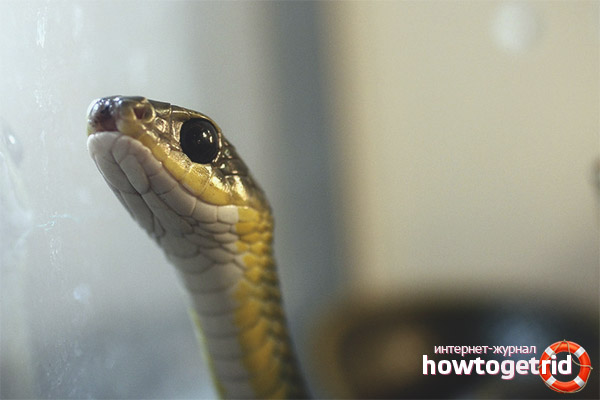
Snakes are considered carnivorous representatives of the animal kingdom and amphibians, in particular, lake frogs, are one of their favorite treats. Also, in the absence of amphibians, they are not averse to feasting on rats, lizards, smaller snakes and small birds. Snakes swallow prey alive and swallow.
In addition, as with most reptiles, snakes show a manifestation of cannibalism in eating their newborn offspring. There are times when the strongest snake eats the weaker, if they chose the same animal as the object of hunting and grabbed it at the same time.
The reasons for the reduction in the number of large-eye snake
Snake lovers and herpetologists were not left without consequences and catching snakes. However, now such activity is monitored and requires special permission. But at this stage it is difficult to completely control this process.
Also, due to the fact that large-headed snakes often visit nearby settlements, many individuals are killed by local residents, fearing for life and health. Although this species is absolutely safe for humans. It is non-conflict and not toxic. The biggest troubles that the runners can cause to the villagers are the attack on the poultry.
How to keep a captive snake
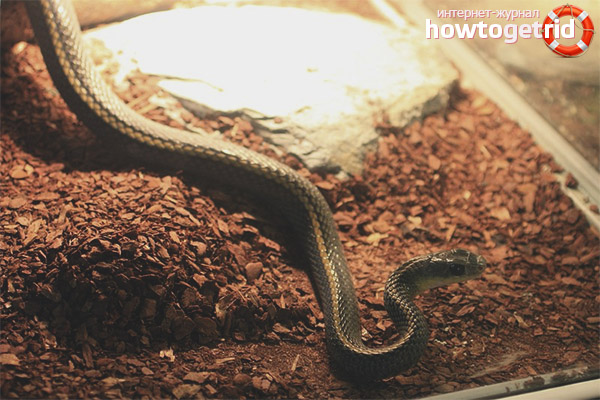
There are no special rules for caring for this species, it is worth observing only the basic recommendations for keeping snakes:
- Keep worth in a terrarium or in cages.
- The size of the terrarium should allow the snake to move freely, as well as the size of the snake itself.
- There must be a shelter, since the snake is rather shy.
- It is necessary that in one place of the terrarium there is heating - so that the individual can choose between normal temperature and a heated angle.
- The temperature should correspond to the following indicators: 26-28 ° C at the warmest point and 19-21 ° C in the opposite corner.
In addition, several branches can be placed in the terrarium to allow animals to climb, as well as use ultraviolet lamps in order to improve the state of the snake. You can feed them with frogs, lizards or mice.
Video: big-eyed snake (Ptyas mucosa)

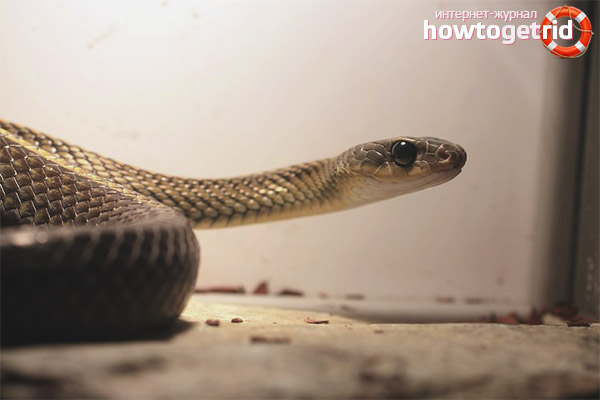

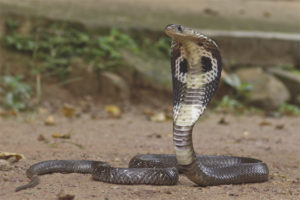
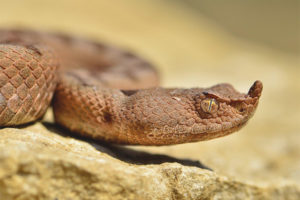
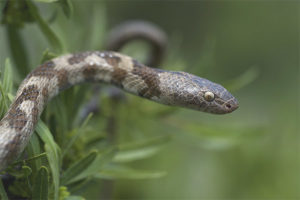
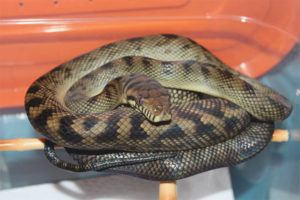
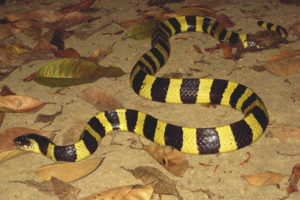

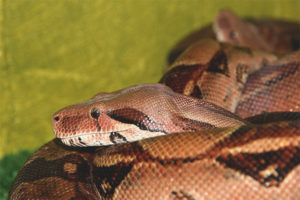
Submit